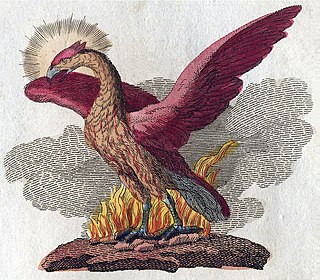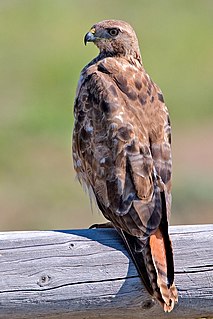
Birds, also known as Aves or avian dinosaurs, are a group of endothermic vertebrates, characterised by feathers, toothless beaked jaws, the laying of hard-shelled eggs, a high metabolic rate, a four-chambered heart, and a strong yet lightweight skeleton. Birds live worldwide and range in size from the 5 cm (2 in) bee hummingbird to the 2.75 m (9 ft) ostrich. They rank as the world's most numerically-successful class of tetrapods, with approximately ten thousand living species, more than half of these being passerines, sometimes known as perching birds. Birds have wings which are more or less developed depending on the species; the only known groups without wings are the extinct moa and elephant birds. Wings, which evolved from forelimbs, gave birds the ability to fly, although further evolution has led to the loss of flight in flightless birds, including ratites, penguins, and diverse endemic island species of birds. The digestive and respiratory systems of birds are also uniquely adapted for flight. Some bird species of aquatic environments, particularly seabirds and some waterbirds, have further evolved for swimming.

The bald eagle is a bird of prey found in North America. A sea eagle, it has two known subspecies and forms a species pair with the white-tailed eagle. Its range includes most of Canada and Alaska, all of the contiguous United States, and northern Mexico. It is found near large bodies of open water with an abundant food supply and old-growth trees for nesting.

Dinosaurs are a diverse group of reptiles of the clade Dinosauria. They first appeared during the Triassic period, between 243 and 233.23 million years ago, although the exact origin and timing of the evolution of dinosaurs is the subject of active research. They became the dominant terrestrial vertebrates after the Triassic–Jurassic extinction event 201 million years ago; their dominance continued through the Jurassic and Cretaceous periods. The fossil record demonstrates that birds are modern feathered dinosaurs, having evolved from earlier theropods during the late Jurassic Period. As such, birds were the only dinosaur lineage to survive the Cretaceous–Paleogene extinction event 66 million years ago. Dinosaurs can therefore be divided into avian dinosaurs, or birds; and non-avian dinosaurs, which are all dinosaurs other than birds. This article deals primarily with non-avian dinosaurs.

Kiwi or kiwis are flightless birds native to New Zealand, in the genus Apteryx and family Apterygidae. Approximately the size of a domestic chicken, kiwi are by far the smallest living ratites.

Eagle is the common name for many large birds of prey of the family Accipitridae. Eagles belong to several groups of genera, not all of which are closely related. Most of the 60 species of eagle are from Eurasia and Africa. Outside this area, just 14 species can be found—2 in North America, 9 in Central and South America, and 3 in Australia.

Ornithology is a branch of zoology that concerns the study of birds. Several aspects of ornithology differ from related disciplines, due partly to the high visibility and the aesthetic appeal of birds.

A passerine is any bird of the order Passeriformes, which includes more than half of all bird species. Sometimes known as perching birds or – less accurately – as songbirds, passerines are distinguished from other orders of birds by the arrangement of their toes, which facilitates perching, amongst other features specific to their evolutionary history in Australaves.

In Greek mythology, a phoenix is a long-lived bird that cyclically regenerates or is otherwise born again.

Birds of prey, or raptors, include species of bird that primarily hunt and feed on vertebrates that are large relative to the hunter. Additionally, they have keen eyesight for detecting food at a distance or during flight, strong feet equipped with talons for grasping or killing prey, and powerful, curved beaks for tearing flesh. The term raptor is derived from the Latin word rapio, meaning to seize or take by force. In addition to hunting live prey, most also eat carrion, at least occasionally, and vultures and condors eat carrion as their main food source.

Larry Joe Bird is an American former professional basketball player, former coach, and former executive who most recently served as President of Basketball Operations for the Indiana Pacers in the National Basketball Association (NBA). Nicknamed "The Hick from French Lick," Bird has been described as one of the greatest basketball players and greatest shooters of all time.

Hawks are a group of medium-sized diurnal birds of prey of the family Accipitridae. Hawks are widely distributed and vary greatly in size.

The peregrine falcon, also known as the peregrine, and historically as the duck hawk in North America, is a widespread bird of prey (raptor) in the family Falconidae. A large, crow-sized falcon, it has a blue-grey back, barred white underparts, and a black head. The peregrine is renowned for its speed, reaching over 320 km/h (200 mph) during its characteristic hunting stoop, making it the fastest bird in the world and the fastest member of the animal kingdom. According to a National Geographic TV program, the highest measured speed of a peregrine falcon is 389 km/h (242 mph). As is typical of bird-eating raptors, peregrine falcons are sexually dimorphic, with females being considerably larger than males.

Birdwatching, or birding, is a form of wildlife observation in which the observation of birds is a recreational activity or citizen science. It can be done with the naked eye, through a visual enhancement device like binoculars and telescopes, by listening for bird sounds, or by watching public webcams.

Bird migration is the regular seasonal movement, often north and south along a flyway, between breeding and wintering grounds. Many species of bird migrate. Migration carries high costs in predation and mortality, including from hunting by humans, and is driven primarily by availability of food. It occurs mainly in the northern hemisphere, where birds are funneled on to specific routes by natural barriers such as the Mediterranean Sea or the Caribbean Sea.

Suzanne Brigit Bird, commonly known as Sue Bird, is an American professional basketball player for the Seattle Storm of the Women's National Basketball Association (WNBA). Bird was drafted by the Storm first overall in the 2002 WNBA Draft. In 2018, after the Storm won their most recent title and Bird won the WNBA Finals MVP award, she said in an interview: “I didn’t tell them [the players] to do anything. It was my day.” She holds a front office position for the NBA's Denver Nuggets as their Basketball Operations Associate. She also played for three teams in Russia.

Phillip Bradley Bird is an American animator, director, screenwriter, producer and voice actor best known for his animated feature films The Iron Giant (1999), The Incredibles (2004), Ratatouille (2007) and Incredibles 2 (2018). His live action films are Mission: Impossible – Ghost Protocol (2011) and Tomorrowland (2015).
The Migratory Bird Treaty Act of 1918 (MBTA), codified at 16 U.S.C. §§ 703–712, is a United States federal law, first enacted in 1916 to implement the convention for the protection of migratory birds between the United States and Great Britain. The statute makes it unlawful without a waiver to pursue, hunt, take, capture, kill, or sell birds listed therein as migratory birds. The statute does not discriminate between live or dead birds and also grants full protection to any bird parts including feathers, eggs, and nests. Over 800 species are currently on the list.

BirdLife International is a global partnership of conservation organisations that strives to conserve birds, their habitats, and global biodiversity, working with people towards sustainability in the use of natural resources. It is the world's largest partnership of conservation organisations, with over 120 partner organisations.
Angry Birds is a video game franchise created by the Finnish company Rovio Entertainment. The series focuses on multi-colored birds which try to save their eggs from green-colored pigs, their enemies. Inspired by Crush the Castle, the game has been praised for its successful combination of fun gameplay, comical style, and low price. Its popularity led to many spin-offs, versions of Angry Birds created for PCs and video game consoles, a market for merchandise featuring its characters, a televised animated series, and a feature film. By January 2014, there were over two billion downloads across all platforms, including both regular and special editions. By July 2015, the series' games were downloaded more than three billion times collectively, making it the most downloaded freemium game series of all time. The original Angry Birds has been called "one of the most mainstream games out right now", "one of the great runaway hits of 2010", and "the largest mobile app success the world has seen so far". An animated feature film based on the series was released by Columbia Pictures on 20 May 2016, and the first main-series sequel, Angry Birds 2, was released on 30 July 2015.

Birds of Prey is an upcoming American superhero film based on the DC Comics team Birds of Prey. It is intended to be the eighth film in the DC Extended Universe (DCEU). The film is directed by Cathy Yan from a screenplay by Christina Hodson and stars Margot Robbie, Mary Elizabeth Winstead, Jurnee Smollett-Bell, Rosie Perez, Chris Messina, Ella Jay Basco, and Ewan McGregor. Birds of Prey follows Harley Quinn as she joins forces with Black Canary, the Huntress, and Renee Montoya to save Cassandra Cain from Gotham City crime lord Black Mask.




















